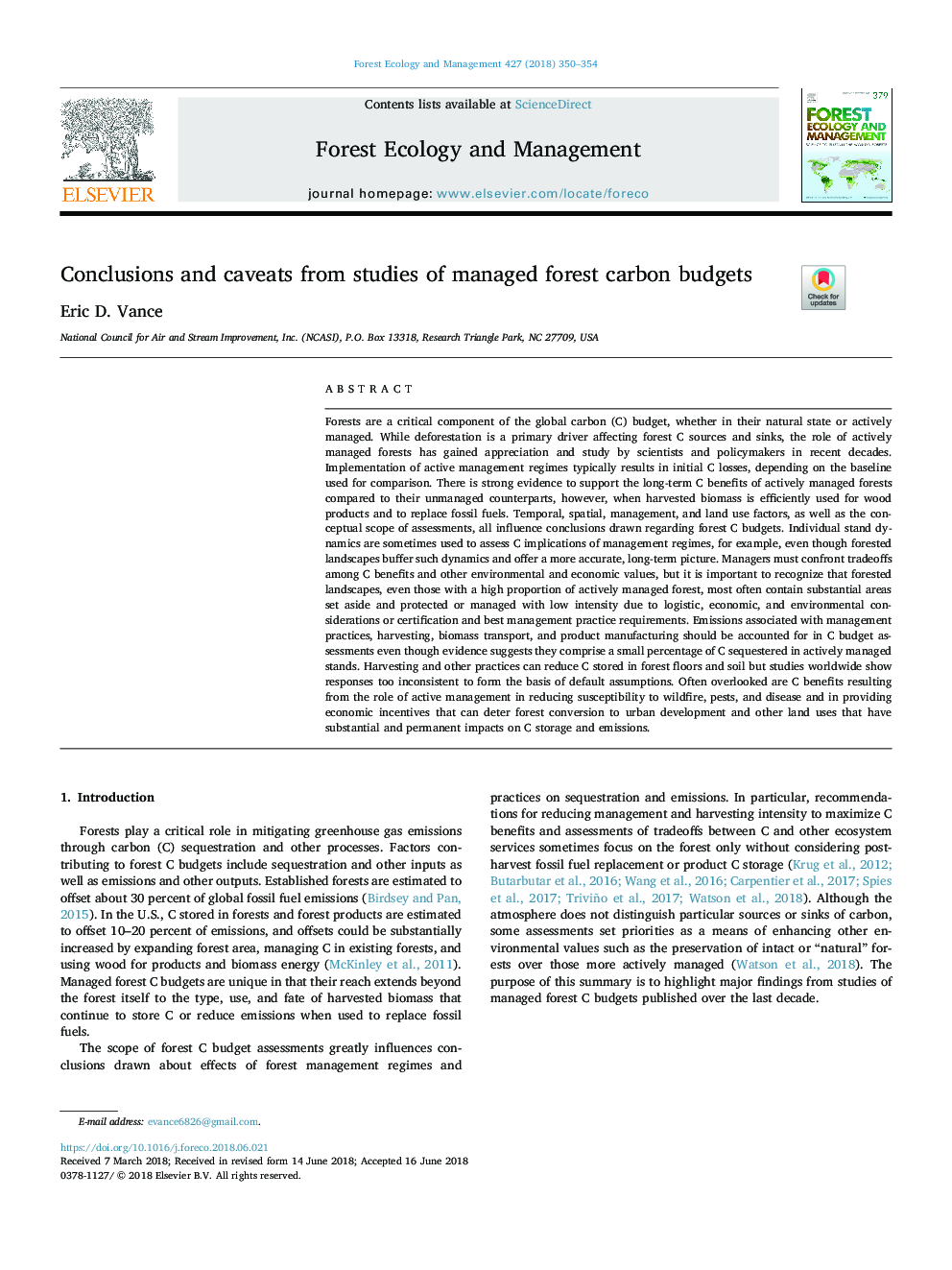| کد مقاله | کد نشریه | سال انتشار | مقاله انگلیسی | نسخه تمام متن |
|---|---|---|---|---|
| 6541486 | 1421333 | 2018 | 5 صفحه PDF | دانلود رایگان |
عنوان انگلیسی مقاله ISI
Conclusions and caveats from studies of managed forest carbon budgets
ترجمه فارسی عنوان
نتیجه گیری و احتمالات از مطالعات مربوط به بودجه کربن مدیریت کربن
دانلود مقاله + سفارش ترجمه
دانلود مقاله ISI انگلیسی
رایگان برای ایرانیان
موضوعات مرتبط
علوم زیستی و بیوفناوری
علوم کشاورزی و بیولوژیک
بوم شناسی، تکامل، رفتار و سامانه شناسی
چکیده انگلیسی
Forests are a critical component of the global carbon (C) budget, whether in their natural state or actively managed. While deforestation is a primary driver affecting forest C sources and sinks, the role of actively managed forests has gained appreciation and study by scientists and policymakers in recent decades. Implementation of active management regimes typically results in initial C losses, depending on the baseline used for comparison. There is strong evidence to support the long-term C benefits of actively managed forests compared to their unmanaged counterparts, however, when harvested biomass is efficiently used for wood products and to replace fossil fuels. Temporal, spatial, management, and land use factors, as well as the conceptual scope of assessments, all influence conclusions drawn regarding forest C budgets. Individual stand dynamics are sometimes used to assess C implications of management regimes, for example, even though forested landscapes buffer such dynamics and offer a more accurate, long-term picture. Managers must confront tradeoffs among C benefits and other environmental and economic values, but it is important to recognize that forested landscapes, even those with a high proportion of actively managed forest, most often contain substantial areas set aside and protected or managed with low intensity due to logistic, economic, and environmental considerations or certification and best management practice requirements. Emissions associated with management practices, harvesting, biomass transport, and product manufacturing should be accounted for in C budget assessments even though evidence suggests they comprise a small percentage of C sequestered in actively managed stands. Harvesting and other practices can reduce C stored in forest floors and soil but studies worldwide show responses too inconsistent to form the basis of default assumptions. Often overlooked are C benefits resulting from the role of active management in reducing susceptibility to wildfire, pests, and disease and in providing economic incentives that can deter forest conversion to urban development and other land uses that have substantial and permanent impacts on C storage and emissions.
ناشر
Database: Elsevier - ScienceDirect (ساینس دایرکت)
Journal: Forest Ecology and Management - Volume 427, 1 November 2018, Pages 350-354
Journal: Forest Ecology and Management - Volume 427, 1 November 2018, Pages 350-354
نویسندگان
Eric D. Vance,
